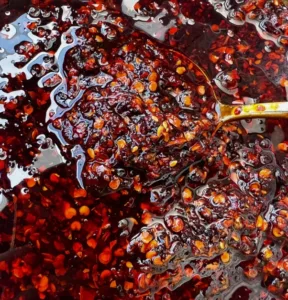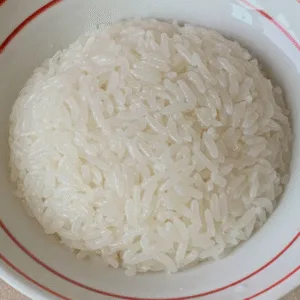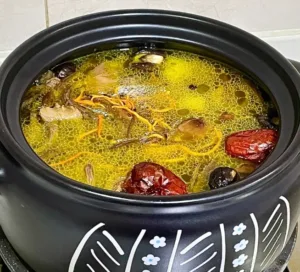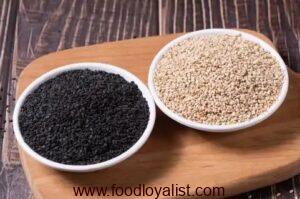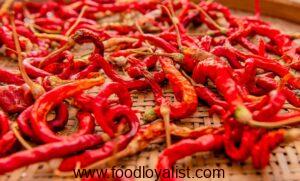Chinese Seasonings and Dried Spices
The Ultimate Guide to Chinese Seasonings: Sauces, Fermented Products & Dried Spices
Sauces & Condiments
From the chinese soy sauces of Asia to the herb-infused oils of the Mediterranean, sauces and condiments transform simple ingredients into unforgettable dishes.
flavoring and spice
Balancing ‘五味’ (wǔ wèi)—sweet, sour, bitter, spicy, and salty—is the essence of Chinese flavor science.
Basic seasonnings
Chinese cuisine is renowned for its rich and diverse flavors, achieved through a careful balance of basic seasonings. Whether you’re stir-frying, braising, or steaming, understanding these fundamental ingredients will help you recreate authentic Chinese dishes at home.
OTHER
Make the taste better, every bite is a surprise everywhere!
flavoring and spice
Spicy Fermented Bean Paste(豆瓣酱 - dòubànjiàng)
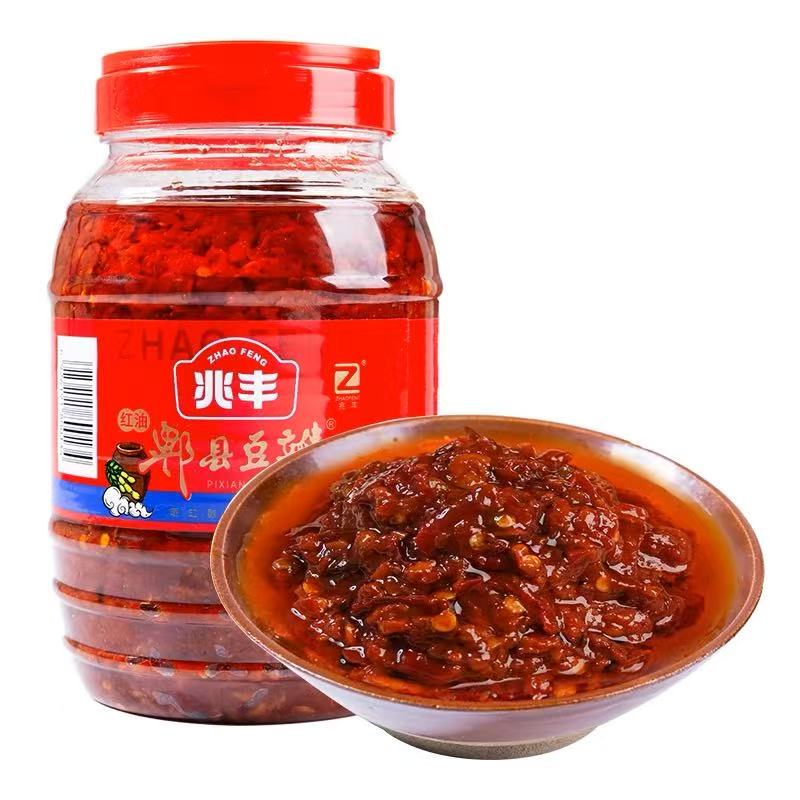
Douban sauce is known as the “soul” of Sichuan cuisine, we commonly find many dishes have its figure, such as boiled fish, mapo tofu, shredded pork with fish, bean fish, etc., and even the hot pot in the extreme love of the hot pot base is also used as one of the main ingredients of the bean sauce stir-fried out of the absence of "bean sauce Without the “bean paste” these dishes can not be called authentic Sichuan cuisine.

Douban sauce is known as the “soul” of Sichuan cuisine, we commonly find many dishes have its figure, such as boiled fish, mapo tofu, shredded pork with fish, bean fish, etc., and even the hot pot in the extreme love of the hot pot base is also used as one of the main ingredients of the bean sauce stir-fried out of the absence of "bean sauce Without the “bean paste” these dishes can not be called authentic Sichuan cuisine.
Rice Vinegar(白醋 - báicù)


Cooking Wine (料酒 - liàojiǔ)
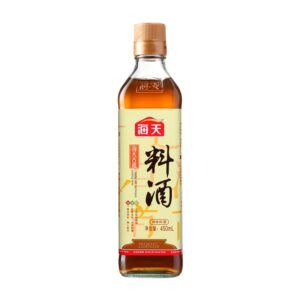
Chinese Cooking Wine is an essential seasoning in Chinese cuisine, primarily made from fermented rice or grains like Shaoxing wine. With its mild sweetness and subtle aroma, it expertly removes unwanted odors from meats and seafood while enhancing umami depth in stir-fries, braises, and marinades. Typically added during cooking (not as a drinking wine), just 1-2 tablespoons tenderizes proteins and balances rich dishes—think of it as the "soy sauce’s flavor partner." For best results, splash it in hot oil first to evaporate alcohol, leaving only complex fragrance.

Chinese Cooking Wine is an essential seasoning in Chinese cuisine, primarily made from fermented rice or grains like Shaoxing wine. With its mild sweetness and subtle aroma, it expertly removes unwanted odors from meats and seafood while enhancing umami depth in stir-fries, braises, and marinades. Typically added during cooking (not as a drinking wine), just 1-2 tablespoons tenderizes proteins and balances rich dishes—think of it as the "soy sauce’s flavor partner." For best results, splash it in hot oil first to evaporate alcohol, leaving only complex fragrance.
Oyster Sauce (蚝油 - háoyóu)
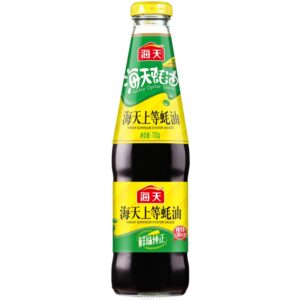
Savory Chinese condiment made from oyster extracts, sugar, and soy sauce, delivering a rich umami flavor with a subtle sweetness. Perfect for stir-fries, noodles, and vegetable dishes, it adds glossy depth with just a spoonful—no need for extra salt or MSG. Unlike fish sauce, it’s milder and caramel-like, ideal for boosting meats, greens, or fried rice. Pro tip: Stir in at the end of cooking to preserve its velvety texture.

Savory Chinese condiment made from oyster extracts, sugar, and soy sauce, delivering a rich umami flavor with a subtle sweetness. Perfect for stir-fries, noodles, and vegetable dishes, it adds glossy depth with just a spoonful—no need for extra salt or MSG. Unlike fish sauce, it’s milder and caramel-like, ideal for boosting meats, greens, or fried rice. Pro tip: Stir in at the end of cooking to preserve its velvety texture.
Special Grade Mushroom Dark Soy Sauce(特级草菇老抽 - tèjí cǎogū lǎochōu)
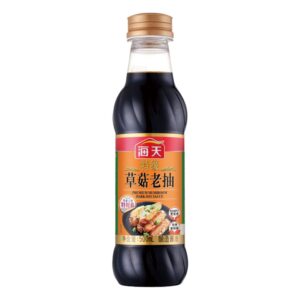
Dark Soy Sauce is a thicker, sweeter, and less salty cousin of regular soy sauce. It’s aged longer, giving it a rich caramel color and deep umami flavor—perfect for adding color and depth to dishes.Not for dipping! Mainly used in stews, marinades, or stir-fries to make food look and taste richer

Dark Soy Sauce is a thicker, sweeter, and less salty cousin of regular soy sauce. It’s aged longer, giving it a rich caramel color and deep umami flavor—perfect for adding color and depth to dishes.Not for dipping! Mainly used in stews, marinades, or stir-fries to make food look and taste richer
Weijixian Premium Light Soy Sauce(味极鲜生抽 - wèijíxiān shēngchōu)
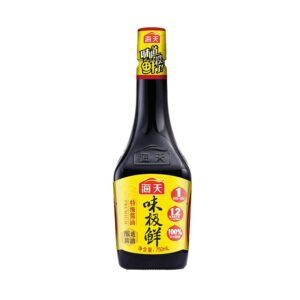
If you feel that your cooking always lacks flavor, you can add seasoning and freshness 5 minutes before serving, because it will make your entire food more delicious and suitable for kitchen novices to use. In addition, Jixian is suitable for dishes that require highlighting freshness, such as braised dishes, stewed dishes, etc. It can not only increase the freshness level of dishes, but also make the color of dishes more red and bright, enhancing the overall visual and gustatory enjoyment

If you feel that your cooking always lacks flavor, you can add seasoning and freshness 5 minutes before serving, because it will make your entire food more delicious and suitable for kitchen novices to use. In addition, Jixian is suitable for dishes that require highlighting freshness, such as braised dishes, stewed dishes, etc. It can not only increase the freshness level of dishes, but also make the color of dishes more red and bright, enhancing the overall visual and gustatory enjoyment
Lao Gan Ma Spicy Beef Chili Crisp(老干妈香辣牛肉酱 - lǎo gān mā xiānglà niúròu jiàng)
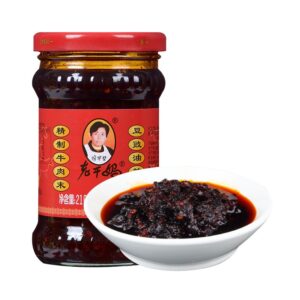
Crunchy, savory, and just spicy enough—Lao Gan Ma’s beef chili crisp is like if chili oil and beef jerky had a delicious baby. The fermented beans add umami depth, while Sichuan peppercorns give a tingly kick. Pro tip: Toss it with roasted veggies or avocado toast for an instant upgrade.

Crunchy, savory, and just spicy enough—Lao Gan Ma’s beef chili crisp is like if chili oil and beef jerky had a delicious baby. The fermented beans add umami depth, while Sichuan peppercorns give a tingly kick. Pro tip: Toss it with roasted veggies or avocado toast for an instant upgrade.
McCormick Ground Cumin(美孜然粉 - měi zīrán fěn)
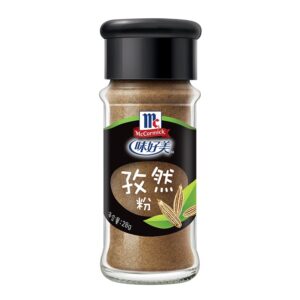
This versatile spice is your passport to bold, smoky flavors from the Mediterranean to Asia. Unlike whole cumin seeds, McCormick's finely ground powder delivers instant depth to dishes without the gritty texture. Its warm, earthy aroma with citrusy undertones makes it indispensable for: Chinese BBQ magic (rub on lamb skewers or mix into dry wok seasonings)

This versatile spice is your passport to bold, smoky flavors from the Mediterranean to Asia. Unlike whole cumin seeds, McCormick's finely ground powder delivers instant depth to dishes without the gritty texture. Its warm, earthy aroma with citrusy undertones makes it indispensable for: Chinese BBQ magic (rub on lamb skewers or mix into dry wok seasonings)
Wujiang Pickled Mustard Tuber(乌江涪陵榨菜 - wūjiāng gúlíng zhàcài)
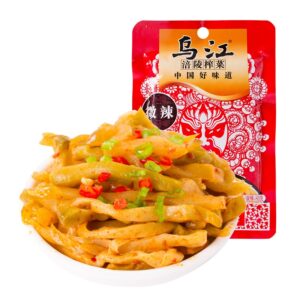
spicy-sour preserved mustard stem from China's Chongqing region, fermented with chili and spices for a bold umami punch. This iconic pantry staple adds instant depth to congee, noodles, and stir-fries—just chop and toss in for texture and flavor. Its unique salty-tangy kick makes it perfect as a condiment, beer snack, or rice-topper, with a satisfying crunch that elevates even simple dishes. Grown along the Yangtze River, these tender-yet-crisp mustard tubers are rinsed, pressed, and aged in a process perfected over centuries. Try it straight from the pack for an authentic Chinese flavor boost, or mix into fried rice and dumpling fillings for extra zing—it's the secret ingredient your Asian dishes need!

spicy-sour preserved mustard stem from China's Chongqing region, fermented with chili and spices for a bold umami punch. This iconic pantry staple adds instant depth to congee, noodles, and stir-fries—just chop and toss in for texture and flavor. Its unique salty-tangy kick makes it perfect as a condiment, beer snack, or rice-topper, with a satisfying crunch that elevates even simple dishes. Grown along the Yangtze River, these tender-yet-crisp mustard tubers are rinsed, pressed, and aged in a process perfected over centuries. Try it straight from the pack for an authentic Chinese flavor boost, or mix into fried rice and dumpling fillings for extra zing—it's the secret ingredient your Asian dishes need!
flavoring and spice
Dried Chili Pepper Pieces (干辣椒段 - gàn làjiāo duàn)
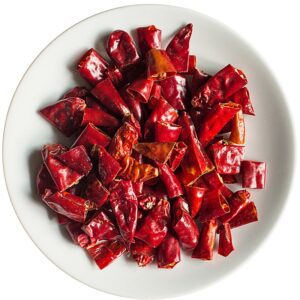
Dried Ginger (干姜 - gān jiāng)
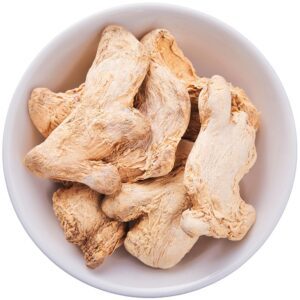
Dried ginger is a versatile spice widely used in Chinese cooking, prized for its warm, pungent flavor and unique ability to balance dishes. When added to stir-fries, soups, or braised meats, it imparts a subtly spicy, earthy taste that enhances richness while cutting through greasiness—perfect for hearty dishes like beef stew or duck soup. A key feature is its natural deodorizing power; its active compounds effectively neutralize strong odors in meats (especially lamb, fish, and offal) without overpowering other flavors. Unlike fresh ginger, dried ginger offers a more concentrated, smoky depth, making it ideal for spice blends or slow-cooked recipes. It also aids digestion, adding a gentle heat that complements ingredients like star anise or cinnamon. Whether used whole, sliced, or powdered, dried ginger brings warmth and complexity to both savory and medicinal dishes, embodying the harmony of flavor and function in Chinese culinary tradition.
Red Chili Pepper (红辣椒 - hóng làjiāo)
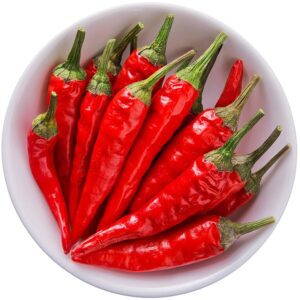
Whole Red Chili Peppers add vibrant color and adjustable heat to Chinese dishes. We briefly toast them in oil to release a clean, sharp spice, steep them in broths/braises for gradual heat infusion, or grind them into flakes for toppings. Unlike pre-ground powder, whole chilies offer fresher, brighter heat and visual appeal – toss 2-3 into stir-fries like Gong Bao Shrimp or add to Sichuan Boiled Fish for authentic flair. Their waxy skin preserves potency longer than fresh chilies. Control spice level by removing seeds (milder) or keeping them intact (hotter). Essential for both fiery dishes and balanced "xiānlà" ( fresh-spicy) flavors.
Rosemary (迷迭香 - mídié xiāng)
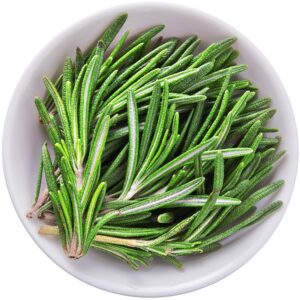
Rosemary adds piney, herbal depth to contemporary Chinese fusion dishes. We use it to elevate roasted meats like lamb racks or crispy duck – its resinous aroma cuts through richness without overpowering. Unlike traditional spices, it’s best added early when searing or braising to infuse oils (keep heat below 180°C/350°F to avoid bitterness). Pair with garlic and black pepper for Western-Chinese hybrids, or steep in oil for marinades. While not classically Chinese, its robust flavor bridges cuisines, especially in oven-based or grilled recipes where earthy notes complement soy-based glazes. Use sparingly; 1-2 sprigs suffice for balance.
Red Chili Powder (红辣椒面 - hóng làjiāo miàn)

Red Chili Powder delivers instant, uniform heat and vibrant color – ideal for quick dishes where infused oil isn’t practical. We stir it directly into sauces (e.g., Dan Dan Noodles), dry rubs for BBQ meats, or blend with Sichuan peppercorns for málà seasoning. Unlike whole chilies, it disperses heat evenly without texture; bloom it in oil for 10 seconds (medium-low heat) to enhance richness before adding liquids. Key for fiery dips, marinades, or adjusting spice levels last-minute. For authentic results, choose coarsely ground powder over fine; it resists burning better and offers brighter flavor. Always store airtight to preserve potency.
Cumin Seeds (孜然籽 - zīrán zǐ)
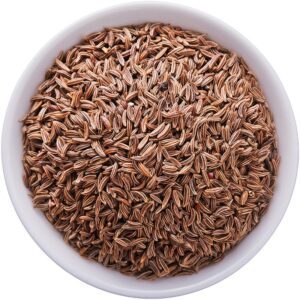
Cumin Seeds are the soul of Xinjiang and Northwest Chinese cuisine. We dry-toast or fry them in oil first to unleash their nutty, smoky aroma – crucial for signature dishes like Cumin Lamb or street-style BBQ skewers. Toasting transforms their raw bitterness into complex warmth; crush lightly after heating to maximize flavor dispersion in marinades, spice mixes, or stir-fried meats. Whole seeds add texture, while ground versions blend seamlessly into sauces. Their earthy-citrus punch cuts through gamey flavors and pairs perfectly with chili and garlic. Essential for achieving that addictive "street food" fragrance foreigners love.
Cinnamon Bark (桂皮 - guìpí)
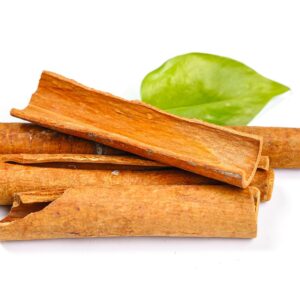
Chinese Cinnamon Bark is thicker, more robust, and less sweet than its Western counterpart. We use whole pieces in braised meats, five-spice blends, and medicinal soups where its warm, woody notes slowly infuse into dishes. Unlike ground cinnamon, the bark releases flavor gradually - ideal for long simmering in red-braised pork or master stock. Its complex aroma (hints of clove and citrus) balances rich, fatty ingredients. Always rinse and lightly crush before use to expose more surface area. Remove before serving as the texture remains tough even after cooking. Essential for creating that distinctive "huiwei" (回味, lingering aftertaste) in Chinese stews.
Black Pepper (胡椒 - hújiāo)
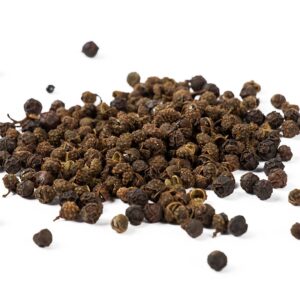
In Chinese cooking, Black Pepper isn't just a table condiment - we use it generously in wok cooking for its sharp, piney heat. Freshly ground peppercorns are key for dishes like black pepper beef or crab, where the spice forms the main flavor profile. Unlike Western usage, we often fry whole peppercorns in oil first to release their aromatic compounds, then build stir-fries around this flavored oil. Its boldness cuts through seafood (fishy tastes) and enhances umami in mushroom-based dishes. White pepper is preferred for light-colored sauces, but black pepper dominates hearty, aromatic stir-fries and clay pot recipes.
White Pepper Powder (白胡椒粉 - měi báihújiāo fěn)
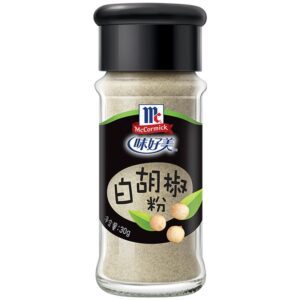
McCormick White Pepper Powder offers consistent fine grind quality that dissolves perfectly in delicate broths and clear soups. We prefer it over black pepper in wonton soup, steamed fish, and congee because its earthy heat doesn't visually darken dishes. The brand's airtight packaging preserves the pepper's sharpness longer than bulk options. Just a pinch (about 1/8 tsp per bowl) cuts through seafood (fishiness) while allowing other flavors to shine. Essential for achieving professional-level seasoning in Cantonese-style light dishes.
Cinnamon and Star Anise (肉桂八角 - ròuguì bājiǎo)
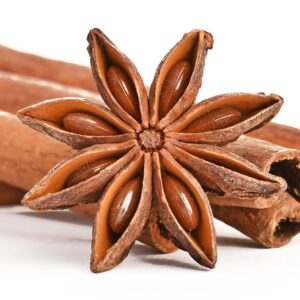
The combination of Cinnamon and Star Anise creates the signature "hui xiang" (, returning fragrance) in Chinese braising. We use this power duo in master stocks, red-cooked dishes, and tea eggs where their sweet-woody (cinnamon) and licorice-aniseed (star anise) flavors meld into complex depth. The cinnamon rounds out star anise's sharpness while the anise prevents the cinnamon from becoming cloying. Toast them briefly in a dry wok before use to amplify their essential oils. This pairing is so fundamental that it forms the base of Chinese five-spice powder. Perfect for dishes where you want lingering sweetness with a sophisticated spice backbone.
Thirteen Spices (十三香 - shísān xiāng)
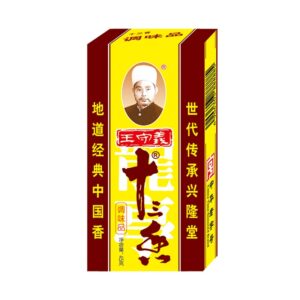
Thirteen Spices is a complex blend that goes beyond five-spice powder, featuring star anise, clove, cinnamon, fennel, and eight other aromatics. We use it generously in braised dishes, marinades, and stuffing for its well-rounded warmth. Unlike single spices, this premixed powder delivers instant depth - just 1/2 teaspoon elevates pork belly or duck recipes. The exact配方 (formula) varies by region, but always creates that distinctive "home-style" aroma foreigners recognize in Chinese restaurants. Sprinkle on roasted meats before serving for an extra fragrance boost.
White Sesame (白芝麻, bái zhīma)
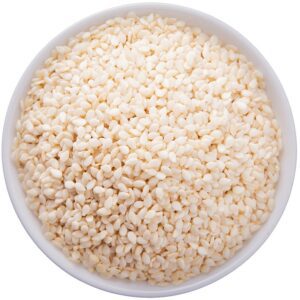
Basic Seasonings
White Granulated Sugar (白砂糖 - bái Shātáng)
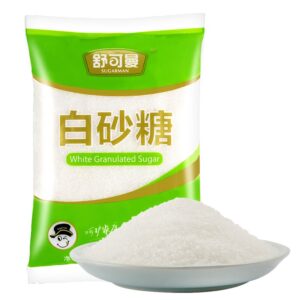
Rock Sugar (冰糖 - bīngtáng)
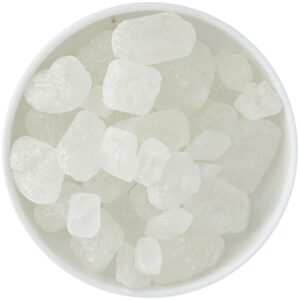
Garlic (大蒜 - dàsuàn)
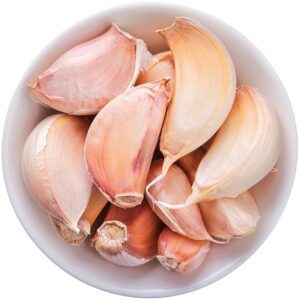
In Chinese cooking, we treat garlic in three transformative ways: smashed (for infused oils), thinly sliced (for fragrance in stir-fries), and minced (for pungent dips). The golden rule? Always cook garlic in stages - start with smashed cloves in cold oil to build base aroma, then add fresh slices later for layered flavor. Unlike Western methods, we often use the entire bulb (including the stem) for zero waste. For authentic (wok hei), toss minced garlic with hot oil just before serving - the sizzle releases volatile compounds that define many regional dishes.
Chicken Bouillon Powder (鸡精 - jījīng)
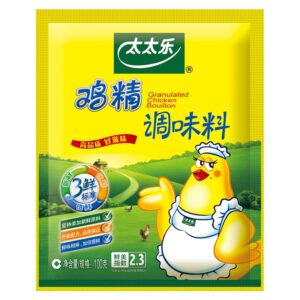
Chicken Bouillon Powder is the umami secret in home kitchens - just 1/4 tsp enhances stir-fried vegetables, soups, and noodle dishes with savory depth that salt alone can't achieve. Unlike Western bouillon cubes, this fine powder dissolves instantly and doesn't make dishes taste "processed." The best brands use real chicken extract with mushroom and yeast components for natural flavor. Sprinkle over blanched greens or fried rice for instant restaurant-quality taste. While not traditional, it's become indispensable for busy cooks wanting fast flavor without MSG aftertaste.
Edible Salt (食用盐 - shíyòng Yán)
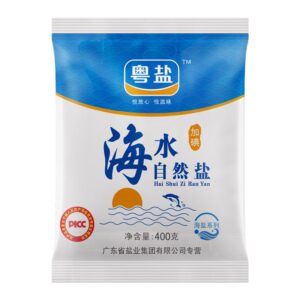
Chinese chefs wield Edible Salt (食用盐) as both seasoning and texture modifier - we rub it on tofu to firm up texture, mix with star anise for dry-brining meats, and even toss with nuts in the wok for enhanced crispness. Unlike Western salting at the end, we often season in layers: a pinch during prep to penetrate ingredients, then adjust before serving. Coarse salt is preferred for (preserving) while fine salt works best for quick stir-fries. Pro tip: For evenly seasoned fried dishes, mix 1/4 tsp salt with 1 tsp water to make a "salt solution" that distributes perfectly in hot oil.
OTHER
Minced Garlic (蒜泥 - suànní)
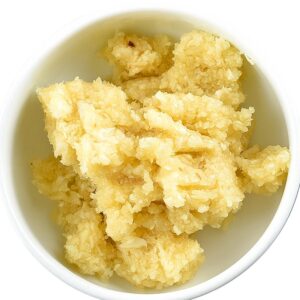
Authentic Minced Garlic isn't just chopped - we crush it with salt using the broad side of a cleaver, creating a paste that clings perfectly to dumpling fillings, cold dishes, and barbecue meats. This ancient technique ruptures more cell walls than machines, releasing extra allicin for sharper flavor. For dipping sauces, we often "bloom" the paste in warm oil first to mellow the harshness. Northern Chinese versions sometimes include a splash of vinegar to create that signature tangy-garlic punch found in lamb hot pot dips. Always prepare fresh; pre-minced jars lose 70% of their aromatic compounds.
Black Sesame Seeds (黑芝麻 - hēi Zhīma)

We dry-toast Black Sesame Seeds until they "dance" in the pan to intensify their nutty aroma before grinding for fillings in (sweet dumplings) or paste. The heat transforms bitter raw seeds into complex, almost chocolate-like depth. Southern Chinese chefs mix them with lard for flaky pastry fillings, while northerners combine them with salt for savory bread coatings. Their striking color also makes them the perfect garnish - a sprinkle over mango pudding or mochi adds visual drama and crunchy contrast. Store toasted seeds frozen to preserve oils for up to 3 months.
Chopped Green Onions (葱花 - cōnghuā)

Chopped Green Onions are the ultimate fresh garnish in Chinese cuisine, adding a crisp, oniony brightness that cuts through rich flavors. We sprinkle them over everything from steamed fish to noodle soups—not just for color, but for their unique ability to enhance taste with their mild sharpness. Unlike Western chives, we use both the white and green parts for layered flavor: the white ends add a subtle punch when cooked briefly, while the green tops provide fresh aroma when added raw at the end. For maximum impact, cut them thinly at an angle to expose more surface area. Pro tip: Soak in ice water for 5 minutes before chopping to make them curl beautifully for presentation.

